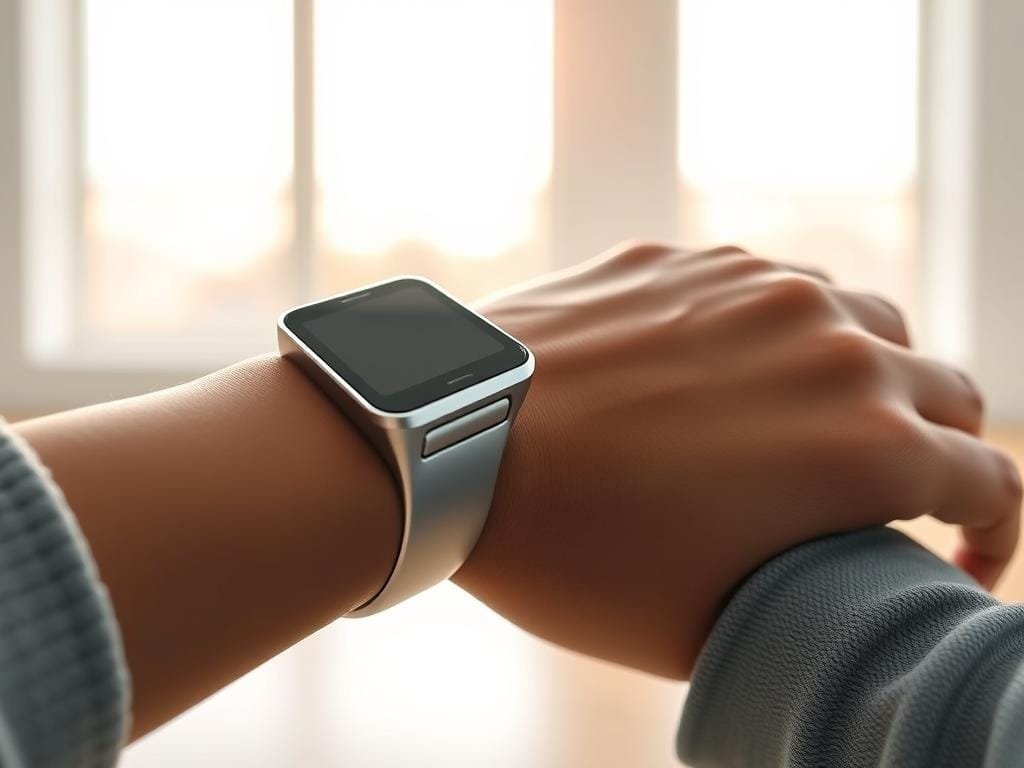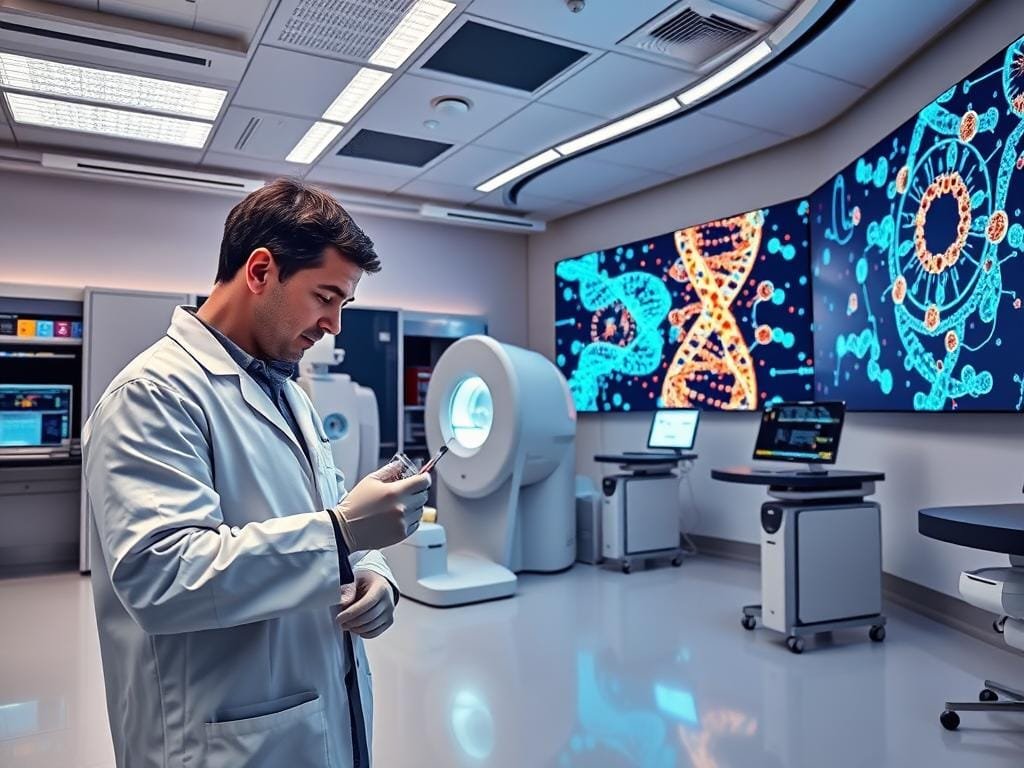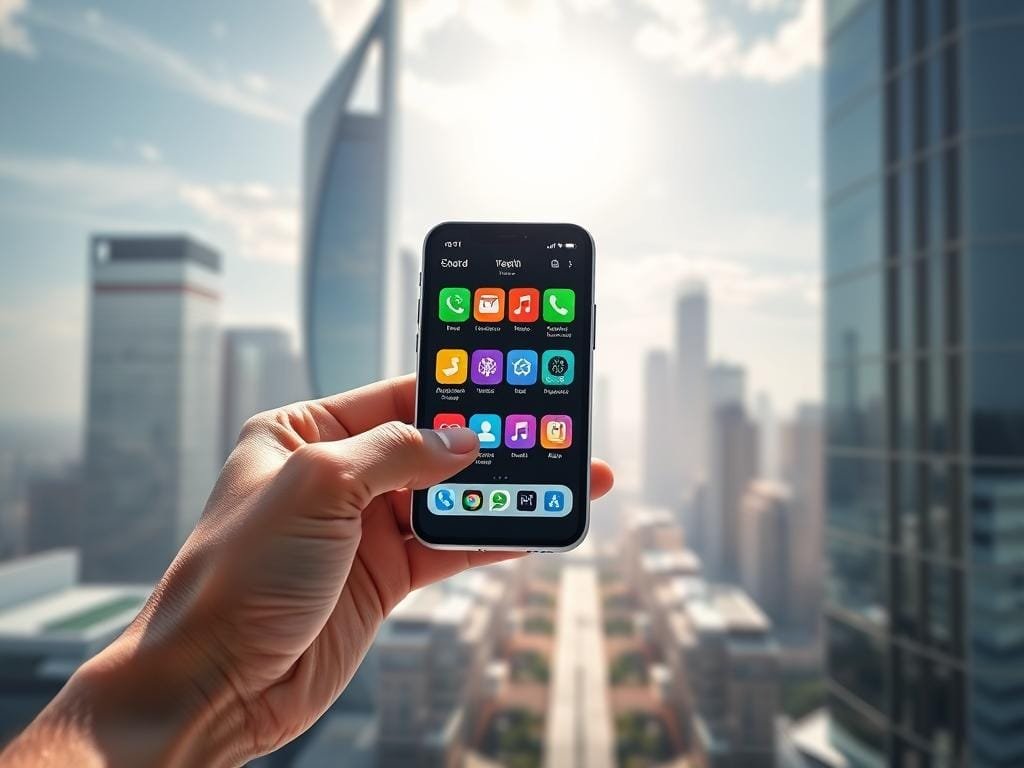You are on the cusp of a revolution in well-being, driven by personalized health technology. The blend of AI and precision medicine is changing healthcare. It makes it more suited to your needs.
Imagine having access to customized wellness solutions that fit your unique health profile. Wearable devices and AI diagnostics let you take charge of your health.
By using health tech trends, you can enter a new era of well-being. For more details on how your data is used, check our privacy policy.
Table of Contents
Key Takeaways
- Personalized health technology is revolutionizing well-being through tailored solutions.
- AI and precision medicine are converging to transform healthcare.
- Wearable devices and AI diagnostics enable proactive health management.
- Customized wellness solutions cater to individual health profiles.
- Staying informed about health tech trends is key for optimal well-being.
The Dawn of a New Healthcare Era
The healthcare world is changing fast, thanks to new technology. This change isn’t just about using new tools. It’s about changing how we get and experience care.
Healthcare is moving from just treating sickness to preventing it. This big change comes from health tech innovations. These innovations help make care more personal and accurate.
From Reactive to Proactive Health Management
Proactive health means using data and tech to stop health problems before they start. This is thanks to patient-centric care and tools like wearable devices and apps. These tools keep an eye on health all the time.
With these technologies, people can take charge of their health. They can make choices based on their own health data. This move towards proactive care aims to make health better and save money in the future.
The Shift to Patient-Centered Care
The old healthcare model mainly treated illnesses, not the person’s needs. But, healthcare technology is changing this. Now, patient-centered care is the focus. It looks at each person’s health, likes, and life situation.
Patient-centered care gets a boost from tech that helps make care plans just right. For example, personalized medicine uses genes to make treatments fit each person. This is a big change from treating everyone the same way.
Understanding the Core Components of Health Technology
Exploring health technology, we find key elements that drive it. Health tech includes tools and services to better healthcare. It relies on several main parts for digital health solutions to work well.

Data Collection and Analysis Systems
At the heart of health tech is data collection and analysis. Health data analytics is vital for making smart healthcare choices. Systems collect data from wearables, electronic health records, and patient reports.
Advanced systems then analyze this data. They spot trends, forecast outcomes, and guide treatment plans. For example, AI can spot high-risk patients early for timely care.
Artificial Intelligence and Machine Learning Applications
AI in healthcare is changing diagnosis, treatment, and care. Machine learning looks through huge data sets for patterns and predictions. It’s used in imaging, personalized medicine, and analytics.
AI chatbots help patients with their care plans. Machine learning models forecast patient outcomes from past data. As AI grows, we’ll see more healthcare innovations.
User Interface and Experience Design
The success of health tech depends on its ease of use. Health tech solutions must be simple, accessible, and engaging. Designing for the user is key, affecting how people use the tech.
A good design makes complex data easy to understand. It helps patients grasp their health and providers make better choices. Health tech companies focus on user experience to make solutions effective and fun to use.
Wearable Devices: Your Personal Health Companions
Wearable health technology is now a key tool for better health. It lets you track your vital signs and health metrics live. This way, you can take steps to live a healthier life.

Fitness Trackers and Smartwatches
Fitness trackers and smartwatches have changed how we track our health. They monitor steps, calories, heart rate, and sleep. They give you a clear view of your daily activity, helping you set and reach fitness goals.
These devices also have cool features like GPS, breathing sessions, and ECG monitoring. A study on PubMed Central shows how important they are for health tracking.
Continuous Glucose Monitors and Health Sensors
Continuous glucose monitors (CGMs) are great for people with diabetes. They give real-time glucose readings, helping manage blood sugar levels better. CGMs alert you to high or low sugar levels, so you can act fast.
Other health sensors track different body functions, giving you useful data. This data helps you make better choices about your diet, exercise, and lifestyle.
Smart Clothing and Embedded Technology
Technology in clothing is a big step forward in health tech. Smart clothes track heart rate, breathing, and muscle activity. This tech is great for sports and fitness, helping athletes perform better and stay safe.
As wearable tech gets better, it will be even more key for managing your health. Using these devices, you can take a more active and informed approach to your health.
AI-Driven Diagnostics and Predictive Health
Artificial intelligence is changing healthcare with new diagnostic tools and predictive analytics. It helps doctors give more precise and proactive care. This leads to better health outcomes for patients.
Early Detection Systems
AI is making it easier to find diseases early. These systems look at lots of data to spot patterns that doctors might miss.
Key Benefits:
- More accurate diagnoses
- Ability to act early
- Custom treatment plans
Predictive Analytics for Preventive Care
Predictive analytics are key in preventing health problems. They forecast risks, allowing for early action to stop diseases before they start.
| Predictive Analytics Tools | Functionality | Benefits |
|---|---|---|
| Machine Learning Algorithms | Analyze historical data to predict future health events | Early detection of health issues |
| Data Integration Platforms | Combine data from various sources for a full analysis | Comprehensive view of patient health |
| Risk Stratification Models | Find patients at high risk of certain conditions | Targeted preventive actions |
Virtual Health Assistants
Virtual health assistants are getting more popular. They offer personalized support and advice. These AI tools help manage chronic conditions, remind patients to take their meds, and give health tips.
By using AI for diagnostics and predictive health, you can take charge of your health. You get to use the latest in healthcare tech to boost your well-being.
Genetic Testing and Precision Medicine
Precision medicine is changing healthcare by using genetic insights for personalized treatments. This method lets doctors tailor treatments to fit your genetic profile. It could lead to better care for you.
Understanding Your Genetic Predispositions
Genetic testing shows your risk for certain health issues, helping with early action. Knowing your genes helps you and your doctor make better choices for prevention and treatment.
For example, genetic tests can spot genes linked to cancer risk. This info helps with early detection and treatment, making it more effective.

Pharmacogenomics: Tailoring Medications to Your DNA
Pharmacogenomics is a part of precision medicine that looks at how genes affect drug responses. By checking your genetic data, doctors can find the best drugs and doses for you.
A study on the National Center for Biotechnology Information shows pharmacogenomics can make treatments better. It reduces bad reactions and makes drugs work better.
Ethical Considerations in Genetic Health Tech
Genetic testing and precision medicine have many benefits but also raise ethical questions. Privacy, data security, and avoiding genetic bias are key concerns.
It’s important to keep your genetic data safe and know how it’s used. Companies and healthcare providers must follow strict ethics to keep your trust and protect your genetic info.
Key considerations include:
- Ensuring informed consent for genetic testing
- Protecting genetic data from unauthorized access
- Preventing genetic discrimination in insurance and employment
By tackling these ethical issues, we can fully use genetic testing and precision medicine to better your health.
Mobile Health Apps: Your Pocket Health Coach
Your smartphone can now be your health coach, thanks to many mobile health apps. These apps help you track your moods, manage symptoms, and get help right from your phone. Digital health solutions have made mobile health a key part of managing your health.

Categories of Health Apps
Mobile health apps come in different types, each with its own purpose. Some apps track your fitness, sleep, and nutrition. Others help manage chronic conditions like diabetes or high blood pressure by monitoring your health and medicine.
Key categories include:
- Fitness and wellness apps
- Chronic disease management apps
- Mental health and mindfulness apps
- Nutrition and diet tracking apps
A health technology expert says, “The variety in health apps lets people pick the best tools for their health needs and goals.” This variety is key for managing your health your way.
Integrating Apps with Other Health Technologies
The real strength of mobile health apps is their ability to work with other health technologies. Many apps connect with wearable devices like fitness trackers or smartwatches. This lets them collect data on your activity and health, giving you personalized advice.
Seamless integration gives you a complete view of your health, helping you make better choices. As health tech gets better, we’ll see even more advanced connections in the future.
“The future of healthcare is not just about treating illnesses, but about creating a culture of wellness through technology.”
Evaluating App Effectiveness and Security
Mobile health apps have many benefits, but it’s important to check if they work well and keep your data safe. Look for apps that have been tested or approved by doctors. Also, make sure they protect your health info.
When picking a health app, think about these things:
- Clinical validation or professional endorsement
- Data encryption and privacy policies
- User reviews and ratings
- Integration capabilities with other health technologies
By choosing and using mobile health apps wisely, you can use digital health solutions to improve your well-being.
Digital Therapeutics and Remote Monitoring
Digital therapeutics and remote monitoring are changing health and wellness. They improve patient care and make healthcare more accessible and tailored.
Treatment Through Technology
Digital therapeutics use digital tools to treat health issues. This includes mobile apps for mental health and virtual reality for pain.
One big plus is ongoing care outside hospitals. For example, diabetes patients can track blood sugar with apps and get advice.
Remote Patient Monitoring Systems
Remote patient monitoring (RPM) lets doctors check patients’ health from afar. They can watch vital signs and activity levels.
RPM is great for chronic conditions. It spots problems early and helps act fast.
| Feature | Traditional Care | Remote Patient Monitoring |
|---|---|---|
| Monitoring Frequency | Periodic visits | Continuous monitoring |
| Data Collection | Limited to visit data | Ongoing data collection |
| Intervention Timing | Delayed until visit | Timely based on real-time data |
Telehealth and Virtual Care
Telehealth and virtual care make healthcare easier to get. Patients can talk to doctors and get plans without seeing them in person.
These services are handy and cut costs. They reduce hospital and emergency visits.
- Convenience: Access healthcare from anywhere
- Cost-effective: Reduces need for in-person visits
- Personalized care: Tailored treatment plans based on individual needs
Digital health is the future of healthcare. Digital therapeutics and remote monitoring are key to this change.
Personalized Health Technology: Creating Your Wellness Ecosystem
Connected health technologies give you the power to build a wellness ecosystem tailored to you. This shift towards personalized wellness means using technology to improve your health. It’s about using many tools and strategies to reach your wellness goals.
Assessing Your Health Needs and Goals
Start by understanding your health needs and goals. Know your current health status and what you want to improve. Use wearable devices or apps to track your daily activities, sleep, and nutrition.
For example, fitness trackers and smartwatches track your activity and heart rate. Continuous glucose monitors help manage blood sugar levels. Health sensors track various physiological metrics.
“The key to a successful wellness ecosystem is understanding your unique health needs and leveraging technology to support your goals.”
Selecting the Right Technologies for Your Lifestyle
With so many health technologies out there, picking the right ones is key. Think about your health needs, preferences, and daily life. For fitness, a smartwatch with GPS might be best. For managing a chronic condition, a continuous glucose monitor is better.
Also, make sure your devices and platforms work well together. This will make your experience better and give you a full view of your health.
Integrating Multiple Platforms and Devices
To create a cohesive wellness ecosystem, integrate different platforms and devices. Choose technologies that work well together and share data. For example, syncing your fitness tracker with your mobile app gives a better health overview.
| Device/Platform | Primary Function | Integration Capabilities |
|---|---|---|
| Fitness Trackers | Activity Monitoring | Syncs with Mobile Apps, Health Platforms |
| Continuous Glucose Monitors | Glucose Level Tracking | Integrates with Insulin Pumps, Health Apps |
| Mobile Health Apps | Health Data Management | Compatible with Wearables, Health Sensors |
Establishing Sustainable Health Tech Habits
To get the most from your wellness ecosystem, make health tech habits that last. Use your devices and platforms regularly, track your progress, and adjust as needed.
- Set reminders to check your health metrics often.
- Use data to make smart health decisions.
- Keep checking and adjusting your wellness goals.
By following these steps and using personalized health technology, you can build a lasting wellness ecosystem. It will support your health goals for the long term.
Accessing Health Tech Resources in the United States
The United States leads in health tech innovations. It offers many resources to improve your health. You’ll find innovation hubs, local providers, and insurance that supports health tech in your life.
Leading Health Tech Innovation Hubs
The US has key areas pushing healthcare technology forward. San Francisco, Boston, and New York are at the forefront. Silicon Valley is famous for tech, including telemedicine that changes healthcare access.
Finding Local Health Tech Providers
To find local health tech providers, search online. Look for health tech companies near you. They offer services like remote monitoring and digital therapeutics. Check professional directories or PMC for health tech solutions. Local healthcare facilities also partner with tech companies.
Insurance Coverage and Reimbursement for Health Technology
Understanding insurance coverage for health tech can be tricky. But it’s key to access these resources. Many insurances now cover telemedicine services. Check with your provider to see what’s covered.
By using these resources, you can build a health ecosystem with the latest tech. The US has everything you need to improve your health and wellness.
Conclusion: Embracing Technology for Your Health Journey
The future of wellness is here, thanks to personalized health technology. It’s changing how we take care of ourselves. With tools like wearable devices and AI, we can manage our health better.
The future of health is about more than just treating sickness. It’s about keeping us healthy and improving our lives with smart health tech. These advancements help us understand our health needs better.
Think about how these technologies can help you reach your health goals. By using personalized health technology every day, you can make healthcare more personal and effective.

